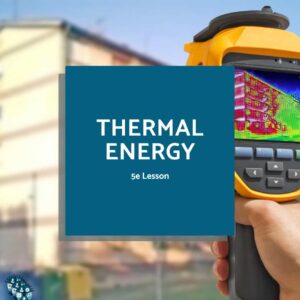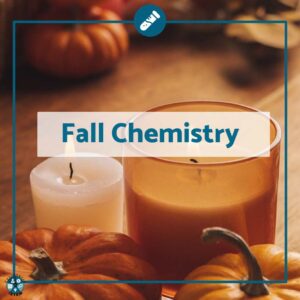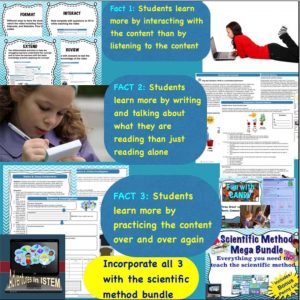
Wondering how to improve student learning so that they retain the information they are being taught? According to Edgar Dale, students have a 75% chance of learning the information when they practice doing the information and a less than 10% chance when they are lectured on it. Our job is to increase the amount of student practice and decrease the amount of lecture/reading (without writing). Take a look at your class time. How much time is spent on students receiving the information and how much time is spent on the students practicing using the information. A few years ago I would spend at least half the class time giving the students information through power points or other methods. Yes, I would have a few checks for understanding and pair-shares. But if I am honest with myself, the majority of the time was spent on giving the students the basic information through power points. As a middle school teacher, I felt that the majority of the students came in with no background knowledge on science and so I needed to spend most of my time building that background knowledge, and that left little time for practice. This brings me to the three facts about student learning. Fact 1: students learn more by interacting with the content than by listening to the content. Fact 2: students learn more by writing and talking about what they are reading than just reading alone. Fact 3: students learn more by practicing the content over and over again.
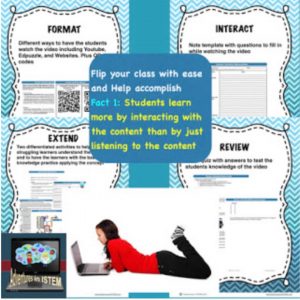
Improving Student Learning Outcomes #1
To allow students more time with practicing using the information and less time listening to lectures or reading about the information I have flipped my class. For some teachers flipping your class can be intimidating. How should you flip? What videos should you use? How long should they be? How do I hold my students accountable? What do I do in class the next day? What if they don’t watch the videos? These were my questions when I decided to flip my class last year. To make it easier I have taken the fear out of flipping a class. I created an acronym called FIRE: Format, Interact, Review, and Extend. I use this format whenever I do a class lesson. It helps me figure out the videos to use, how I will hold the students accountable, and most importantly what I am going to do in class the next day. You can check out my scientific method bundle to get a better idea of how I “FIRE” up my flipped class.
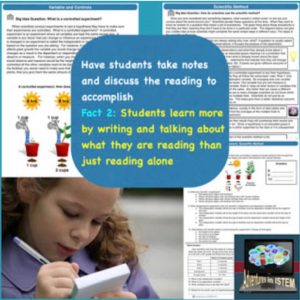
Improving Student Learning Outcomes #2
It’s very important that students practice reading expository text, however when they read the text they need to interact with it and they need to review and practice what they read. Textbooks can be very difficult for some students to read. They are filled with lots of difficult vocabulary words and contain some information that students might not need. My expository summaries provide the basic information using the key academic vocabulary. Plus students have a handout that goes with each expository reading that has a varied level of questions that challenge the students at all levels.
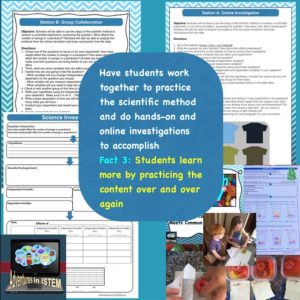
Improving Student Learning Outcomes #3
The most important thing to remember when planning your lessons is to allow a lot of time for students to interact and practice working with the topic. This is where their minds start remembering, learning, working through the misconceptions and difficulties. They figure things out and through practice start to own the learning. The hands-on investigations and virtual labs my students do with help from their groups help my students understand what it is they are learning. I love it when I can see the lights click on and you know that they finally get it.
For more information on how I tackle the three facts when teaching the scientific method click here.


